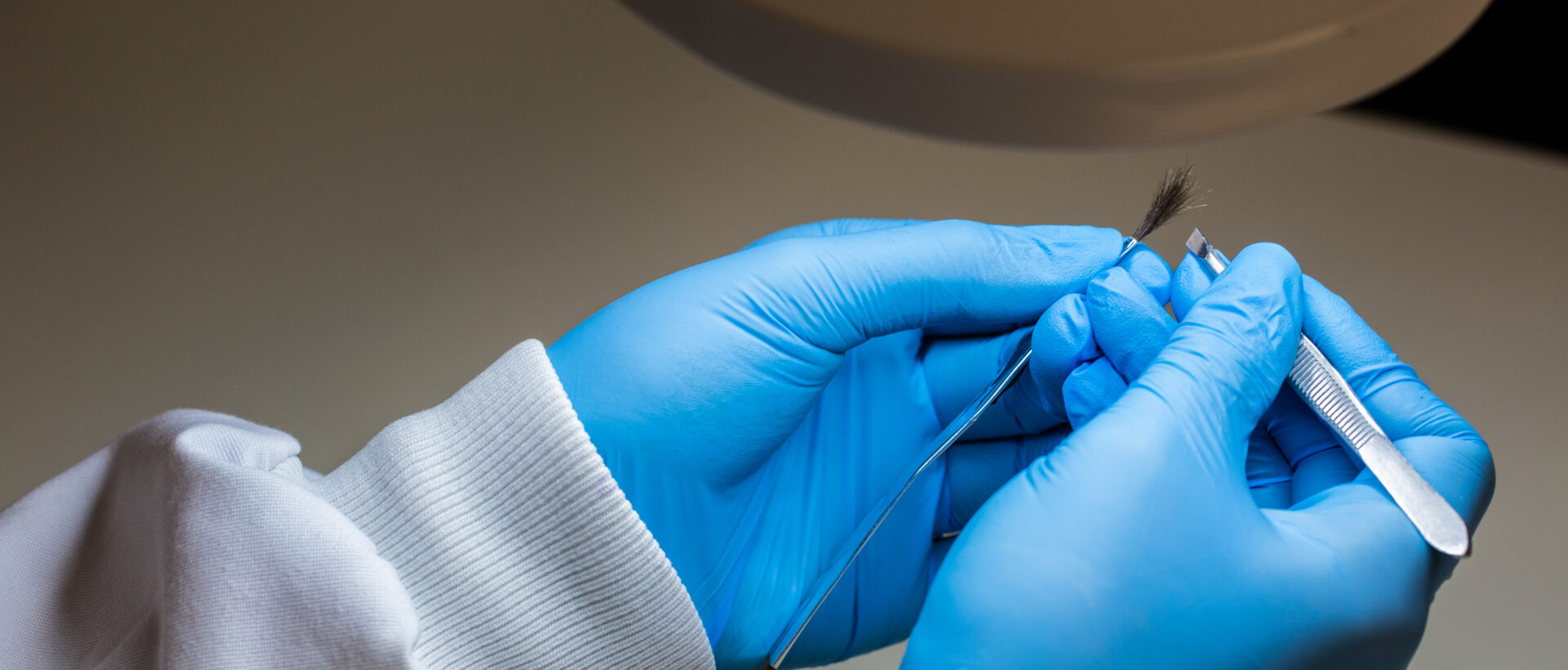
Can hair dye alter a drug test?
By Jade Huish, Reporting Scientist.
It is well documented that the use of chemical hair treatments such as hair dye can damage hair, having the potential effect of reducing the concentration of any drugs, metabolites and alcohol markers present in the hair.
As such, the use of chemical hair treatments can reduce low level ‘detected’ results to below the cut-off level and result in a ‘not detected’ result.
Laboratory analysis
At the time of sample collection, donors are asked to provide information about the use of any chemical treatments, such as dye, in addition to the date on which it was used.
Every hair sample is visually inspected by trained laboratory technicians prior to analysis for evidence of dye lines. In addition, during the laboratory process sometimes the extract (solution) of the hair can become discoloured, if this occurs this can indicate that dye may be present.
Notes are made by the laboratory technicians for any visible colour changes along the length of the hair and/or during the laboratory extraction process, this is then subsequently detailed in the expert report.

Interpretation
Whilst it is ideal to analyse hair that has not been chemically treated, we understand that this is not always possible. We have undertaken analysis on thousands of hair samples over the years which have been chemically treated and have still shown ‘detected’ results above the reporting cut-off level.
Therefore, it is still possible to obtain evidence of drug use / alcohol consumption in some cases. Any consideration as to whether the results in your case have been lowered will be detailed in your expert report.

Hair products and hair test results
The use of products on the hair, such as hairspray, does not affect the results of hair drug testing. However, the use of products needs to be considered when interpreting the results of hair alcohol testing.
This is because one of the two alcohol markers for the hair alcohol test, ethyl palmitate (EtPa), can be elevated using products containing ethanol (ethyl alcohol).
The Society of Hair Testing (SoHT) states that either the alcohol marker ethyl glucuronide (EtG) or the alcohol marker ethyl palmitate (EtPa) can be used independently in the assessment of chronic excessive alcohol consumption.
However, to obtain the most accurate interpretation it is advised to use them in combination. This is because EtPa can be artificially elevated when a donor uses products on the hair containing ethanol (ethyl alcohol), whereas the level of EtG would not be raised using such products.
Therefore, in cases where products have been used it is possible for the EtPa result to be elevated above the cut-off level. However, our experts at Lextox will assess the hair alcohol marker test results in conjunction with the use of any products by the donor when interpreting the results.
Therefore, as the use of hair treatments and products can affect the results in some cases, it is advisable for donors to refrain from using any treatments or products on their hair in the months prior to hair drug testing or hair alcohol testing.

How we can help
If you’re concerned about how hair treatments like hair dye could affect drug or alcohol test results, don’t hesitate to reach out to our experts.
Contact us today to learn more about our hair drug and alcohol testing solutions.
By Jade Huish
Reporting scientist
Jade has worked at Lextox since 2019 and has a BSc with Honours in Forensic Biology. She has worked in forensic laboratories since 2012 specialising in the analysis of forensic exhibits and the interpretation of analytical data from the examination of drugs of abuse. At Lextox she specialises in the examination of hair samples for drugs of abuse, metabolites and alcohol markers. Jade has also successfully completed training in ‘Courtroom Skills for the Expert Witness’ and has attended court to provide expert evidence during her career. In addition, Jade is a member of the Society of Hair Testing (SoHT).

Published 27/02/24 – All information correct at time of publication

